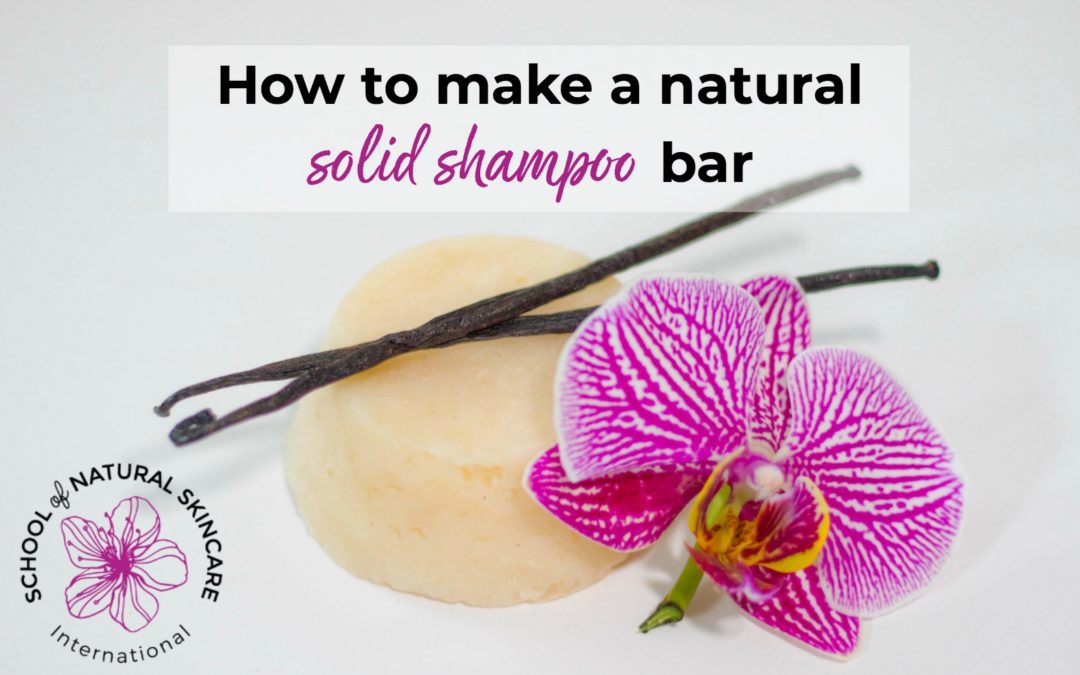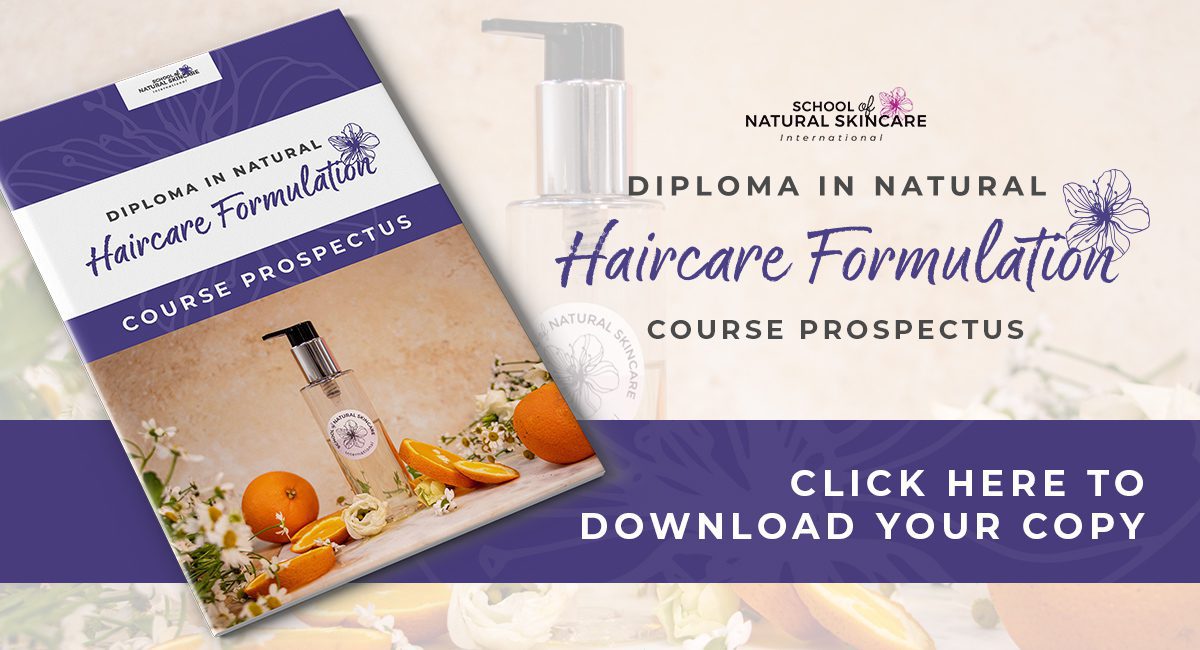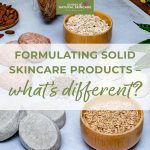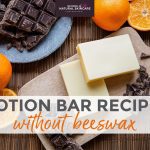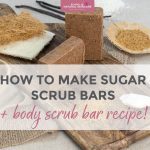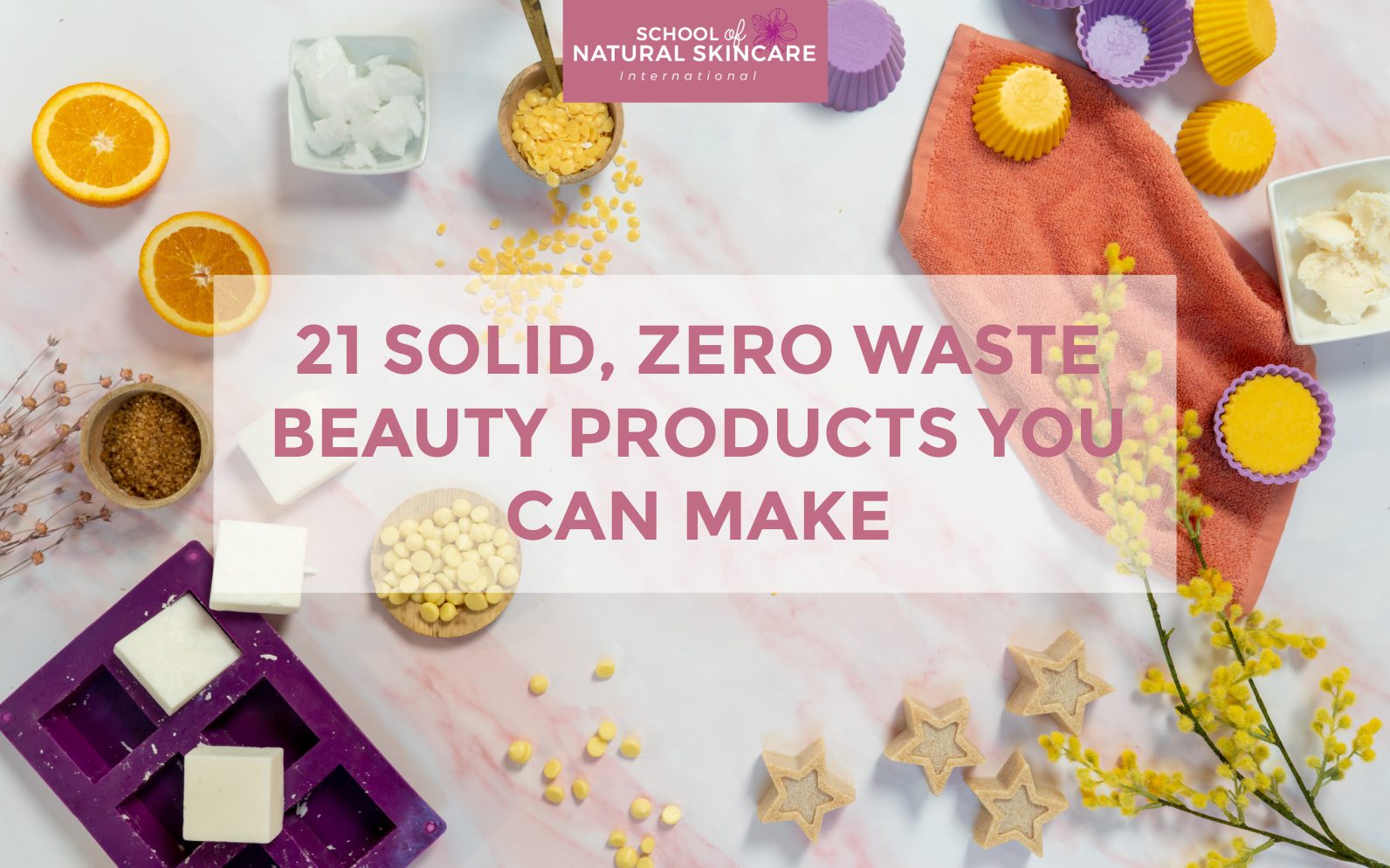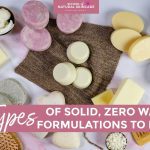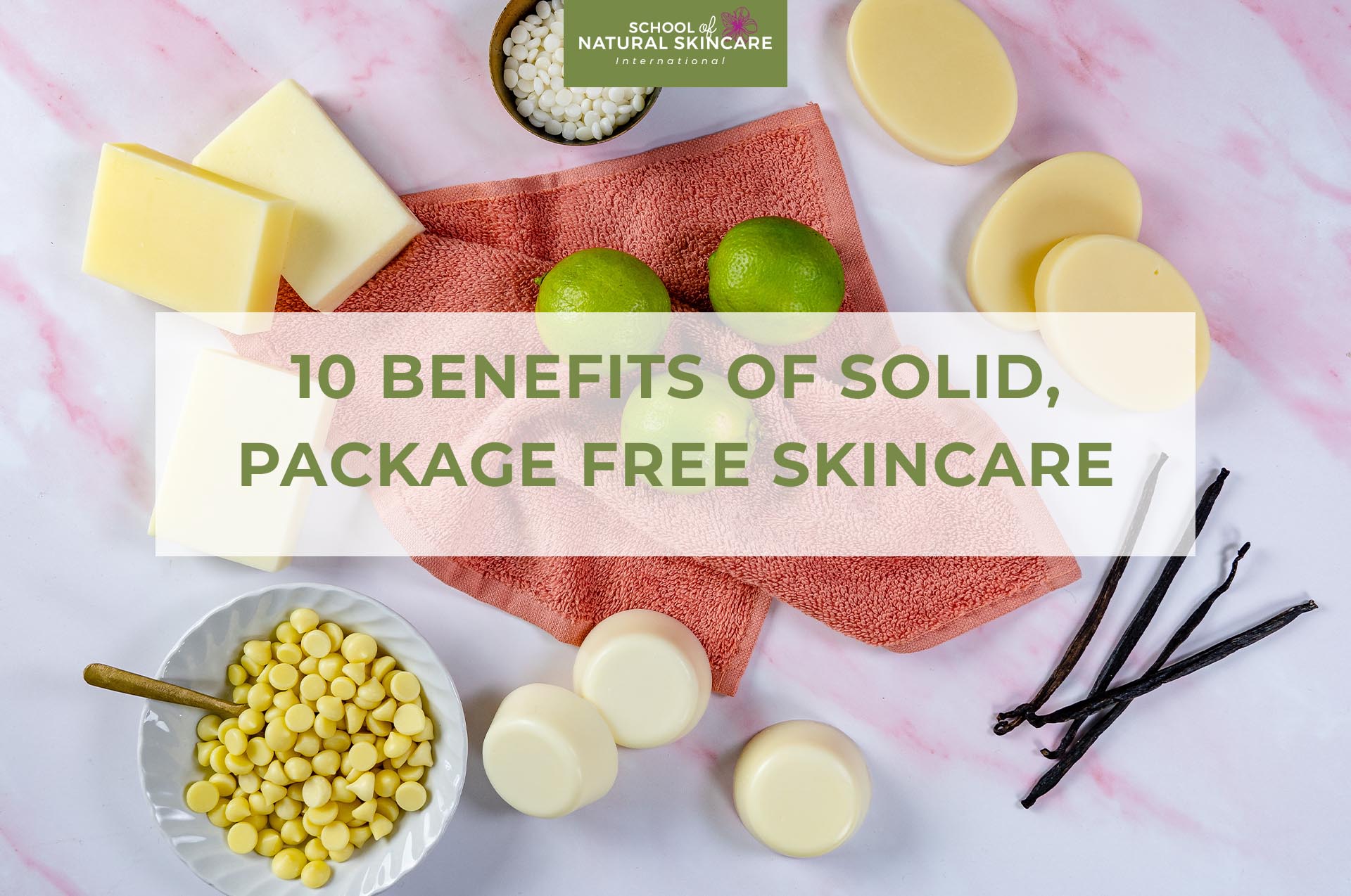Solid shampoo bars are becoming more and more popular due to the growing zero-waste movement and well-known cosmetic companies like LUSH making solid shampoos.
But did you know many shampoo bars on the market are actually cold-process soap bars and not true shampoo at all? Soap is completely unsuitable for the hair as we explain here.
Here we are going to show you how to make a solid shampoo bar that is made with more gentle surfactants and ingredients permitted by the EcoCert and COSMOS organic/natural standards.
Solid shampoo bars are similar to a shampoo concentrate – they contain a high amount of surfactants (the cleansing ingredient) and very little water. This makes the manufacturing cost of a solid shampoo much higher than a liquid shampoo. But on the other hand, they last longer than liquid shampoos. And of course, as they don’t require packaging they have excellent environmentally friendly credentials!
The ingredients in a solid shampoo bar
Though they may look like soap bars, proper shampoo bars are not soap! Soap is in fact is really damaging to the hair (which we explained in detail in this article).
The main ingredient is a shampoo bar is a solid surfactant. It is really important to include enough solid surfactant as this will contribute to the solid form of the shampoo. We have included four different surfactants that are EcoCert/COSMOS approved: sodium coco-sulfate (a solid surfactant), sodium lauryl sulfoacetate (a solid surfactant), cocamidopropyl betaine (an amphoteric surfactant), and decyl glucoside (a non-ionic surfactant).
We’ve included cocoa butter, an emollient which will help to soften and nourish the hair. (Solid butters also contribute to the solid form of the shampoo.) Cetyl alcohol is a fatty alcohol that will help to solidify the shampoo bar and also provide a nice emolliency to the bar and hair (plus it’s less greasy than cocoa butter). Varisoft EQ65 is a cationic emulsifier, approved by EcoCert/COSMOS, that will condition the hair.
We’ve chosen to use benzoin and patchouli essential oils to give a warm and sweet fragrance. You could use different ones if you wish.
Simple solid shampoo bar formula
| Phase | INCI name | Trade name | Function | % (w/w) |
|---|---|---|---|---|
| A | Sodium Coco-Sulfate | SCS | Primary surfactant | 32 |
| A | Sodium Lauryl Sulfoacetate | SLSA | Secondary surfactant | 30 |
| A | Cocamidopropyl Betaine | CAPB | Secondary surfactant | 8 |
| A | Decyl Glucoside | Decyl glucoside | Secondary surfactant | 7.5 |
| B | Cetyl Alcohol | Cetyl Alcohol | Emollient, thickener | 3 |
| B | Distearoylethyl Dimonium Chloride, Cetearyl Alcohol | Varisoft EQ65 | Conditioner, thickener | 9 |
| B | Theobroma Cacao (Cocoa) Butter | Cocoa butter | Emollient, thickener | 6 |
| C | Citric Acid | Citric acid | pH adjuster | 1.5 |
| C | Benzyl Alcohol, Dehydroacetic Acid | Preservative Geogard 221 | Preservative | 1 |
| C | Styrax Benzoin (Benzoin) Gum Oil | Benzoin essential oil | Fragrance | 1.5 |
| C | Pogostemon Cablin (Patchouli) Leaf Oil | Patchouli essential oil | Fragrance | 0.5 |
How to make the solid shampoo bar
Firstly decide what batch size you want to make and turn the formula provided into a weight-based recipe you can follow.
To keep this really simple you can make a 100g batch (about two bars) by taking each percentage given in the formula above and putting a gram symbol next to it.
Our courses contain a batch calculator which makes calculating different quantities easy!
Instructions for making:
- Mix phase A ingredients in a container and melt in a water bath or double boiler, stirring occasionally. This can take a while (over 20 minutes) and the result won’t be liquid, but rather pasty.
- Mix phase B ingredients in a separate container and melt in a water bath or double boiler and stir occasionally.
- Once phase A is soft and homogenous, add phase B into phase A and stir using a spoon or a stirring rod.
- Cool the mixture to approximately 45°C, making sure it’s still soft. Add phase C ingredients and stir.
- Transfer the mixture into a mold (silicone or plastic mold works best), and put in the refrigerator for a couple of hours, until it solidifies.
- Unmold the shampoo bar and leave to dry for a couple of days.
Enhancing your shampoo bar with vitamins, humectants and active ingredients
The formula we have provided is a highly effective, but quite simple, formula.
One of the things students on our courses LOVE is enhancing simple formulas with vitamins, botanical extracts and active ingredients to really take them to the next level.
This formula can be enhanced further and made into a Fortifying Shampoo Bar by adding Panthenol, Lexfeel Natural and Phytokeratin.
Panthenol (also known as Pro-vitamin B5) is a vitamin and humectant that will moisturize and strengthen the hair. Lexfeel Natural (INCI Heptyl Undecylenate) is an emollient and natural silicone replacement and Phytokeratin (INCI Hydrolyzed Soy Protein (and) Hydrolyzed Corn Protein (and) Hydrolyzed Wheat Protein) is an active ingredient that will fortify hair and give it shine and bounce.
The full formula for a Fortifying Shampoo Bar is one of the example formulas we share in our Diploma in Natural Haircare Formulation. This in-depth, multimedia course goes into detail about formulating for different hair types, and using different active ingredients to address a wide variety of different problems, hair types and conditions.
If you have enjoyed this formula and want to know more about creating and customizing your own haircare products then you’ll LOVE our Diploma in Natural Haircare Formulation. You’ll learn to formulate your own natural and organic shampoos, conditioners, treatments and styling products!
We can’t wait to welcome you!
FAQs:
Q: Doesn’t this still contain sulphates?
A: We believe that not all sulphates are the same, and concerns that are applicable to SLS and SLeS are not an issue in the case of SCS – it’s naturally derived, milder than SLS and is not in risk of 1,4-dioxane contamination. This formulation contains Ecocert approved ingredients only, which means it’s suitable for one of the most strict certifications for natural / organic cosmetics at the moment. But in the Diploma in Natural Haircare Formulation we provide additional solid shampoo example formula that is sulfate free, along with excessive list of surfactants that can be used in haircare product making.
Q: I thought SCS wasn’t accepted in organic formulation?
A: SCS is in fact permitted in many organic certifications, like Ecocert and COSMOS.
Q: I though Varisoft, being cationic, wasn’t compatible with anionic surfactants like SLSA but you use all these in the formula. Am I wrong? Could you explain?
A: Varisoft EQ65 is one of the few cationic emulsifiers that are permitted by Ecocert. Combining cationic and anionic ingredients in most cases doesn’t work well, but it is a complex topic and this rule has a few exceptions – solid shampoo bars are one of them. So even it it seems uncommon at first sight, this formula functions very well 🙂
Free Natural Shampoo & Conditioner Recipe Book
Learn to make your own natural shampoos & conditioners with luxurious natural ingredients.
Download this fabulous book and discover recipes for:
- Cocoa Butter and Patchouli Solid Shampoo Bar
- Shea and Coconut Conditioner for Dry Hair
- Monoi Beauty Butter for Hair
- Vanilla and Benzoin Solid Conditioner Bar
- Gentle Aloe and Chamomile Liquid Shampoo for normal hair

